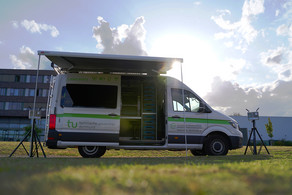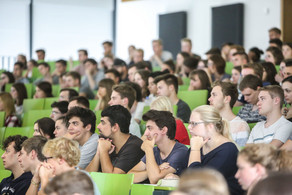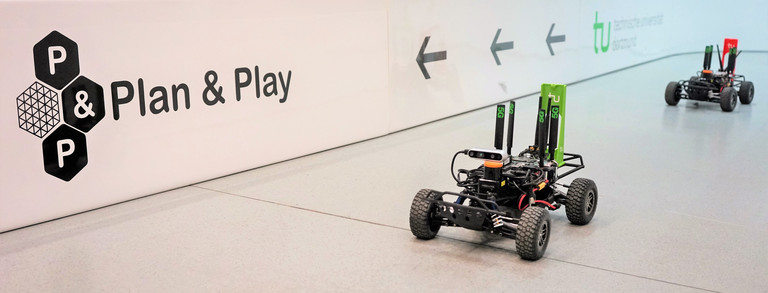Grundlagen der Simulation von Kommunikationssystemen (GSK)
Termine
| Praktikum | Ort | Modul |
|---|---|---|
| Di, 25.02.2025 bis Do, 06.03.2025. Täglich von 09:00 Uhr bis 16:00 Uhr | Retina Pool P1-01-108b | ETIT-108 |
Die Veranstaltung findet gleichzeitig zum Praktikum Simulative Leistungsbewertung von Kommunikationsnetzen (SLK) statt.
Anmeldung
Bitte melden Sie sich im LSF zu dieser Veranstaltung an. Die Anmeldung ist zum 03.02.2025 11:59 Uhr möglich. Die Platzvergabe erfolgt anschließend nach §9 der Prüfungsordnung.
Zur Vergabe von Plätzen für Nachrücker wenden Sie sich bitte per E-Mail an die Betreuer (siehe unten).
Vorkenntnisse
Empfohlene Kenntnisse: Grundkenntnisse von Kommunikationssystemen
Erforderliche Kenntnisse: Bestandene Modulprüfung "Einführung in die Programmierung (IF-001)".
Lerninhalte
- Erarbeiten der benötigten Grundlagen von Kommunikationssystemen
- ISO/OSI Referenzmodell
- Fehlerkorrekturmaßnahmen in Kommunikationssystemen (z.B.: ARQ)
- Routing- und Broadcastverfahren
- Grundlagen der simulativen Dimensionierung/Konzeptionierung
- Aufbau eventbasierter Simulationen in OMNeT++
- Charakteristika eines Kommunikationssystems (z.B. Datenraten, Verzögerungen, Interferenzen und Protokolle) und deren Abbildung in der Simulationsumgebung
- GUI, Tooling, Debugging
- Simulation verschiedener Kommunikationsverbindungen (Fehlerbehaftet, verzögerungsbehaftet, Half-Duplex, Full-Duplex, Point-To-Point)
- Weiterführende Kenntnisse in Simulationstechniken
- Finite State Machine
- Auswertung durch Nutzung von verschiedenen Analysewerkzeugen
- Simulation und Analyse verschiedener Broadcast- und Routingverfahren in verschieden komplexen Kommunikationsnetzen
Kompetenzen
Nach dem erfolgreichen Abschluss des Praktikums besitzen die Studierenden fundierte Kenntnisse über die simulative Entwicklung und Evaluierung von Kommunikationssystemen. Dazu gehört neben den eigentlichen Funktionen der Simulationsumgebung OMNeT++ auch die sichere Anwendung von allgemeinen, softwaretechnischen Entwicklungsmechanismen, wie z.B. professionellem Debugging. Die Absolventen dieses Praktikums werden in der Lage sein, ein gegebenes Vernetzungsszenario zu abstrahieren und realitätsgetreu in der Simulationsumgebung OMNeT++ abzubilden und die erhaltenen Ergebnisse entsprechend aufzubereiten.
Kreditpunkte
Um die 3 Kreditpunkte im Praktikum Grundlagen der Simulation von Kommunikationssystemen zu erreichen, werden nach Modulhandbuch für den Bachelor Studiengang Elektrotechnik und Informationstechnik an der Technischen Universität Dortmund vom 30.01.2019, sowie nach Modulhandbuch für den Bachelor Studiengang Informations- und Kommunikationstechnik an der Technischen Universität Dortmund vom 30.01.2019 folgende Prüfungsleistungen gefordert:
- 80% der Praktikumsversuche sind erfolgreich zu bearbeiten.
- Für jeden Versuch ist ein Protokoll anzufertigen.
Literatur
- C. Wietfeld, Vorlesungsunterlagen Kommunikationsnetze
- A. Vaga, OMNeT++ Manual 4.6, A. Vaga, https://omnetpp.org
- A. Vaga, OMNeT++ API Reference 4.6, https://omnetpp.org





